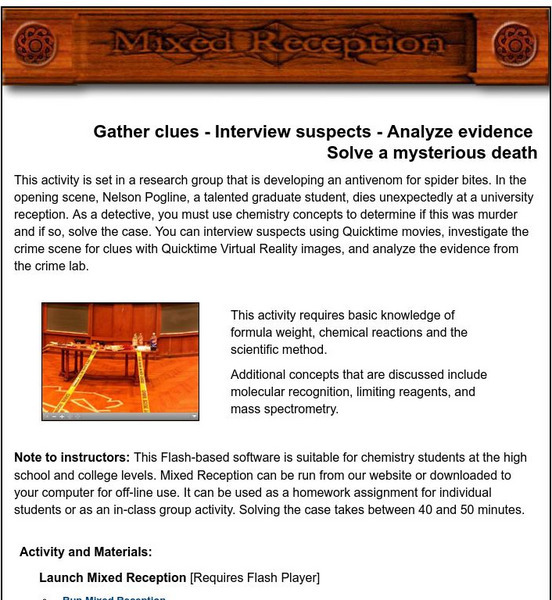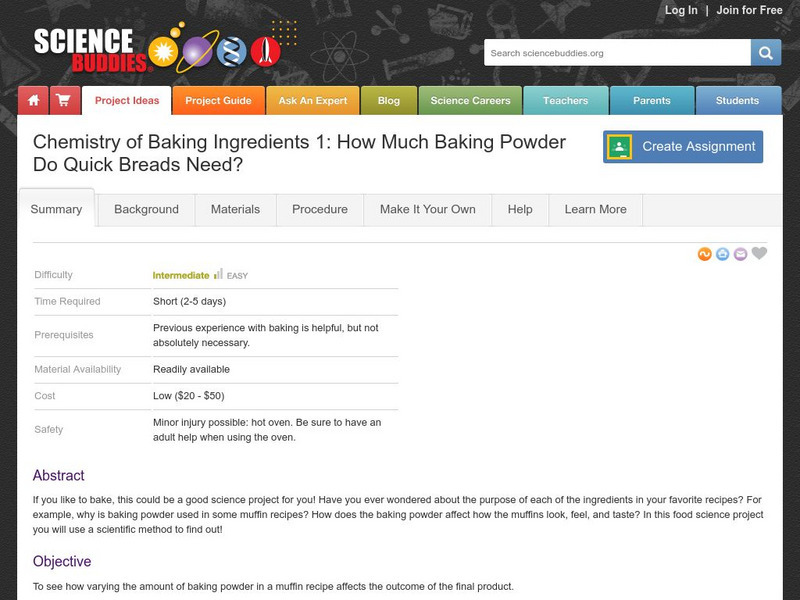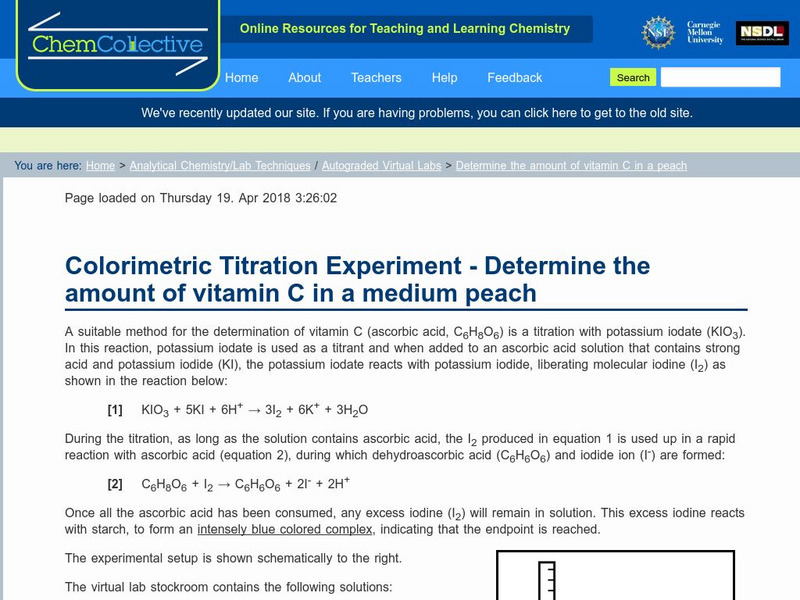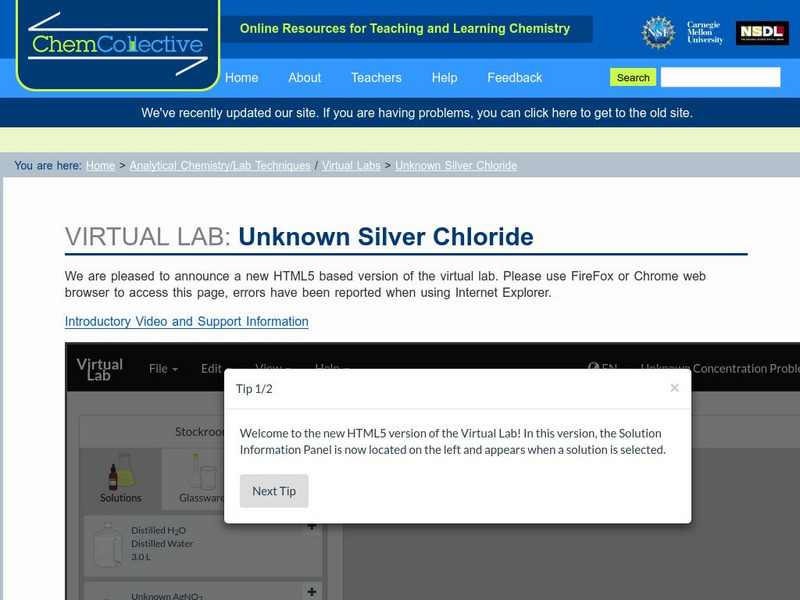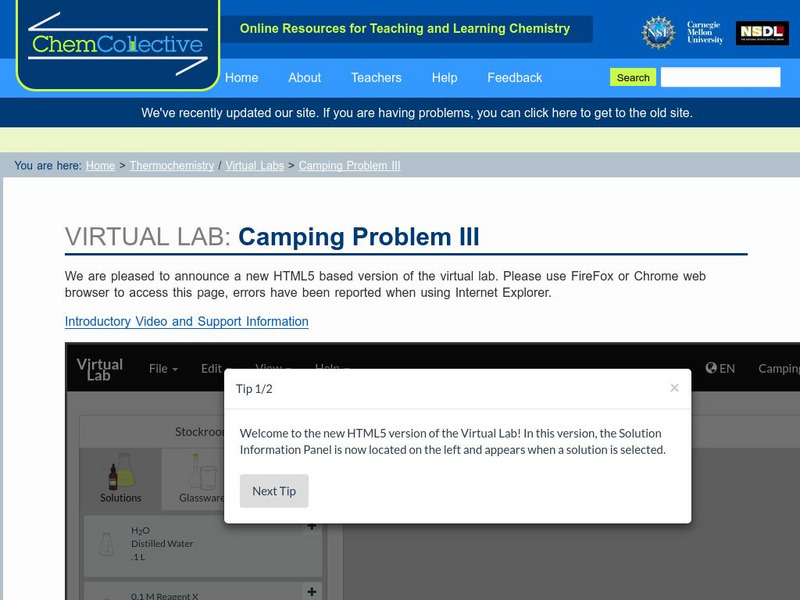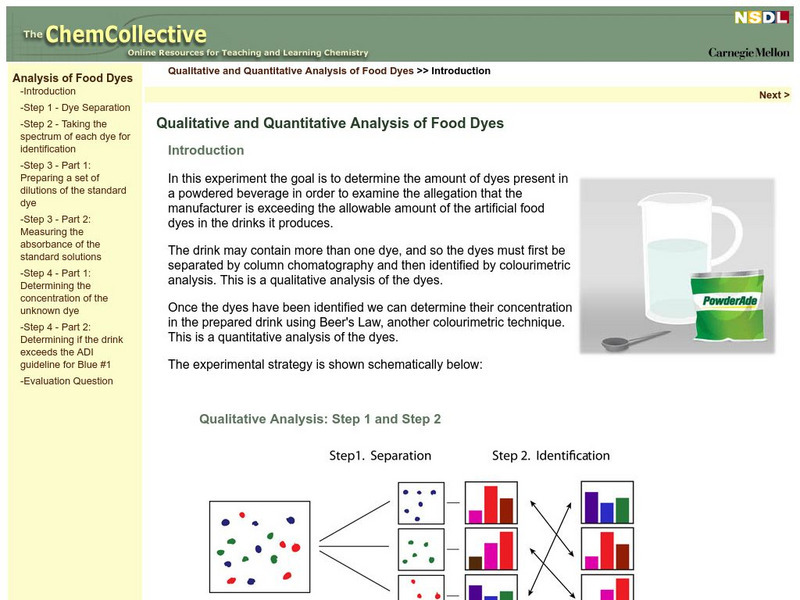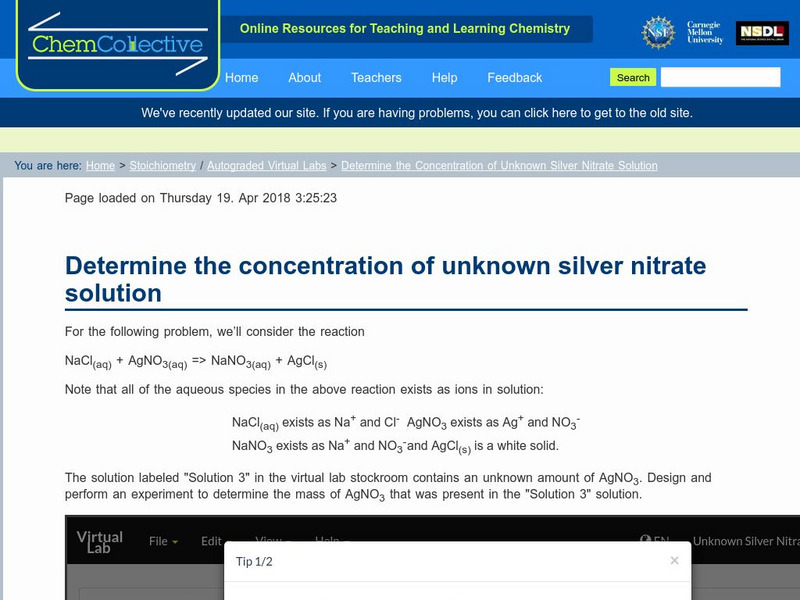Hi, what do you want to do?
Science and Mathematics Initiative for Learning Enhancement (SMILE)
Smile: Solubility of Gases in Liquids
Lab activity where young scholars determine the relationship of pressure and temperature on gas solubility.
Chemistry Collective
Chem Collective: Mixed Reception
Participate in the investigation of a virtual crime scene using chemistry concepts to solve a mysterious death. The 40-50 minute activity can be used as a classroom lab or as a homework assignment. Additionally, teachers may request a...
Science Education Resource Center at Carleton College
Serc: Resources for Using Ph Et Simulations in Class Ph Et Activities Database
The PhET website at the University of Colorado in Boulder has a large collection of science simulations for teaching chemistry and physics, available in many languages. This page describes the Activities Database, which is searchable by...
Science Buddies
Science Buddies: Career Profile: Chemical Technician
A career as a chemical technician requires an associate's degree as a minimum. If you like testing products, working in a lab, and are detail-oriented, you may be interested in this career strand. This Science Buddies site lays out the...
Science Buddies
Science Buddies: How Much Baking Powder Do Quick Breads Need?
If you like to bake, this could be a good project for you. There is a purpose for each of the ingredients in your recipes, but not everyone is always aware of what that purpose may be. Though this lab takes multiple days, you will...
University of Nebraska
Microscale: Solubility of Ammonia
This chemistry tutorial lab deals with the solubility of ammonia gas.
Curated OER
Scientist Performing a Chemistry Experiment
Scientist performing a chemistry experiment.
Dartmouth College
Dartmouth College: Acids, Bases, and Buffers 1: Monoprotic and Polyprotic Acids
In this experiment, you will explore the behavior of the monoprotic acid (acetic acid) and the polyprotic acid (phosphoric acid). By titrating, you will examine the acid and conjugate base species present across the pH scale and the...
Dartmouth College
Dartmouth College: Qualitative Analysis of Anions
"In this experiment, you will observe the reactions of some simple salts, analyze common household chemicals, and identify an unknown sample by testing its reactivity."
Chemistry Collective
Chem Collective: Determining the Concentration of an Unknown Solution
Using the Virtual Laboratory design, students perform an experiment to determine the concentration of the unknown HCl solution to four significant figures.
Chemistry Collective
Chem Collective: Determining Reagent Concentrations
Using the Virtual Laboratory, design an experiment to quickly determine which of the two reagents, HCl or NaOH, is 10 times more concentrated than the other.
Chemistry Collective
Chem Collective: Determine the Amount of Vitamin C in a Peach
Perform a titration experiment to determine the concentration of absorbic acid in one medium peach.
Chemistry Collective
Chem Collective: Unknown Silver Chloride
Determine the concentration of silver ion in a Silver Nitrate solution using gravimetric analysis.
Exploratorium
Exploratorium: Science Snacks: Snacks From a Z
Here is a monumental list of ideas for science fair projects and experiments, organized alphabetically. Every one of them is a link to a full page, with pictures, of information about the idea. This site is a goldmine.
Chemistry Collective
Chem Collective: Camping Problem Iii
In this part of the MRE scenario, students create solutions that when mixed, increase to a certain temperature.
Chemistry Collective
Chem Collective: Standardization of Na Oh With a Khp Solution: Acid Base Titration
Use the Virtual Laboratory to standardize an unknown NaOH solution (approximately 0.2M) to four significant figures via titration with 25.00 mL of a KHP standard solution.
Chemistry Collective
Chem Collective: Camping Problem
Measure the enthalpy of a reaction and then create a solution warm enough to cook food.
Carnegie Mellon University
Chem Collective: Qualitative and Quantitative Analysis of Food Dyes
An interactive tutorial to determine the amount of dyes present in a powdered beverage in order to examine the allegation that the manufacturer is exceeding the allowable amount of the artificial food dyes in the drinks it produces.he...
Chemistry Collective
Chem Collective: Determining Reactants and Products in a Solution of Dna
In this limiting reagents problem, students are given specific concentrations of DNA solutions and are asked to predict what products and reactants will remain after a specific volumes are mixed and reaction has occurred.
Chemistry Collective
Chem Collective: Determine the Concentration of Unknown Silver Nitrate Solution
In this limiting reagents problem, students are asked to determine the amount of silver nitrate dissolved in a solution by performing a reaction with solid NaCl. In this randomized activity, each student is given a different unknown...
Chemistry Collective
Chem Collective: Coffee Problem
In this activity, students use knowledge of specific heat capacity to mix together hot coffee and cold milk to create a solution of coffee at a desired temperature. In this randomized problem, each student is given a different final...
Chemistry Collective
Chem Collective: Unknown Weak Acid Problem
Perform an experiment to determine the pKa and concentration of an unknown acid.
Chemistry Collective
Chem Collective: Unknown Weak Acid Problem Bonus
Perform an experiment to determine the concentrations of a mixture of two acids.
Chemistry Collective
Chem Collective: Solubility and the Common Ion Effect
Determine the concentration of an unknown NaCl solution using the common ion effect.
Other popular searches
- Acid Base Chemistry Labs
- Chemistry Labs of Hydrates
- High School Chemistry Labs
- Christmas Chemistry Labs
- Thermo Chemistry Labs
- Holiday Chemistry Labs
- Introduction Chemistry Labs
- Therm Chemistry Labs
- Online Chemistry Labs
- Chemistry Labs With Candy






